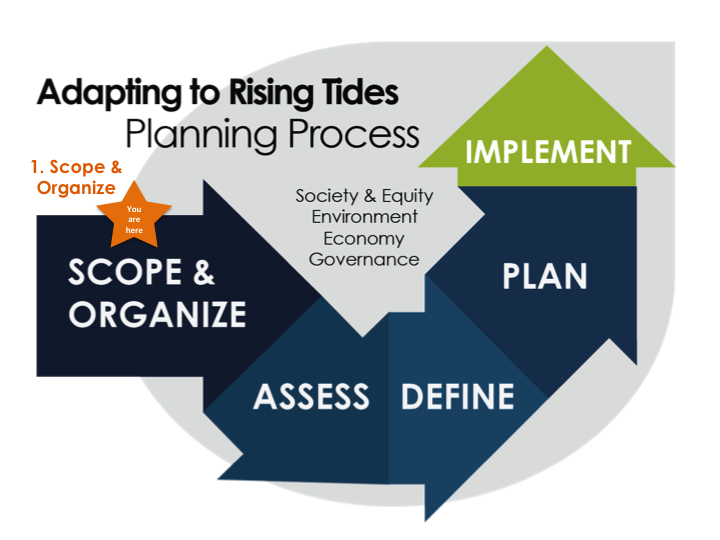This first step in the planning process is critical to conducting a collaborative, transparent process. It defines who will be involved, what will be addressed, where the work will be conducted, and provides an opportunity to determine participants’ level of effort for the project. The project team convenes and engages the working group in shaping the project, and agreeing on a set of resilience goals that identify desired project outcomes. This helps ensure that project results will be actionable and resonate locally.
Issues important to the working group and the project team may need to be balanced with available resources and data, and solutions to challenges such as lack of funding or participation may need to be sought (e.g. leveraging other partnerships or findings from previous projects). The ART supplies for this step provide guidance for engaging your working group, example materials, and recommendations for overcoming common challenges.
Outcomes of this step
- A working group that represents the local knowledge and expert perspectives of the agencies, organizations, communities, public and private interests in the project area
- A project area that includes assets and services that are likely to have consequences on society and equity, economy and environment
- A list of assets that will be addressed in the project
- Climate impact statements that clearly communicate which climate change impacts will be considered and, broadly, the effects that these could have in the project area
- Draft resilience goals that provide guidance throughout the project, defining desired outcomes and providing a foundation for future project decision making
ART Supplies for this step
- Good Planning Guide: Stakeholder Engagement

- Good Planning Guide: Transparent Decision-Making

- How-to Guide: Communicating About Climate Impacts

- Example Agenda: Kick-Off Meeting

- Engagement Exercise: Functions & Values Mapping





